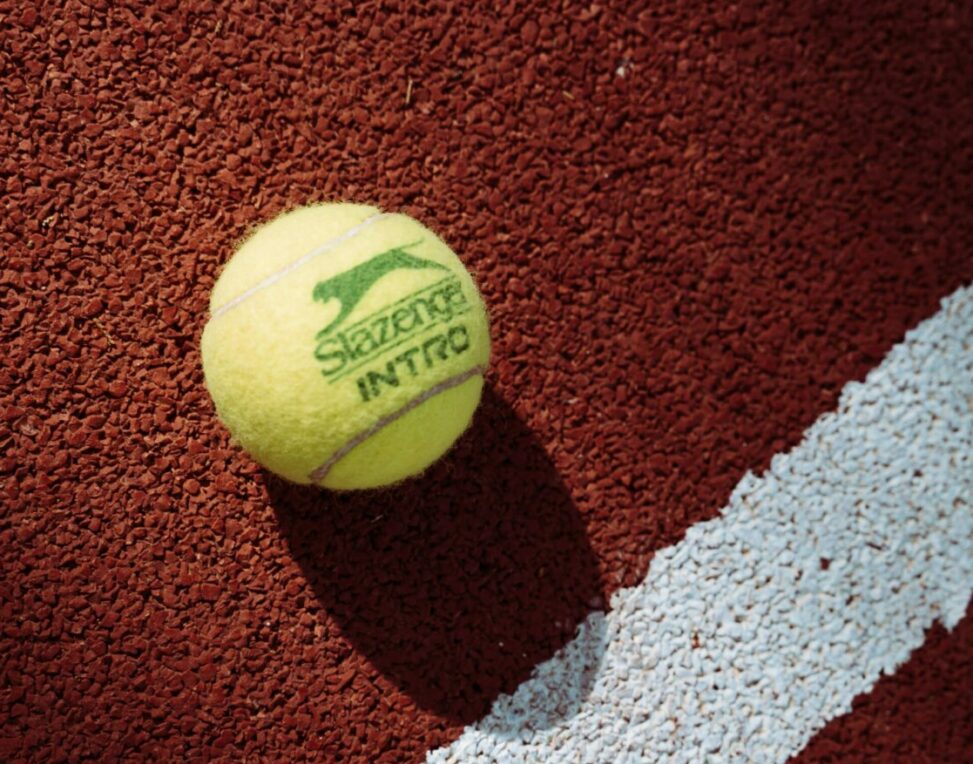Title: How a Tennis Ball Is Made
Learning outcome: students will learn the industrial process for a tennis ball and understand each essential step by watching the supplementary video filmed at a tennis factory.
Instructions:
1. Think about the questions:
- How is a tennis ball made?
- What are the lines on a tennis ball?
2. Watch the video and pay attention to the process you feel important. Feel free to pause or rewind the video when necessary.
How It’s Made Tennis Ball
HASHAM MUGHAL. (n.d.). How It’s Made Tennis Ball [Video]. YouTube. https://www.youtube.com/watch?v=UzAFklErT8c
3. Check the process you noticed in the video in the excel table below.
| Process | Check box | Timestamp |
| Prepping the Rubber |
☑ |
0:06 |
| Curing the Half-Shells | 囗 | |
| Introduction of Sandpaper | 囗 | |
| Making the Core | 囗 | |
| Prepping for Felt | 囗 | |
| Applying the Adhesive | 囗 | |
| Cutting the Felt | 囗 | |
| Applying the Felt | 囗 | |
| Flattening the Felt | 囗 | |
| The Final Cur | 囗 | |
| A Steam Bath | 囗 | |
| Inspection and Stamping | 囗 |
4. Watch the video again and try to locate the beginning timestamp (the first example has been made for you) for each process in the table.
5. Compare your answers with your partner.
Video selection based on course reading and theory:
Considered the affordance and production styles, the selected video is a virtual field trip and on location. This video is under creative commons licenses that are allowed for sharing and distribution. When teaching about the fundamental acquaintance about tennis, the tennis ball is the essential part. Due to the limitation of space and other factors, it would be difficult to take students to the factory and learn about the industrial process of a tennis ball. Therefore, using a short documentary-style video gives one possible solution.
As mentioned by Woolfit (2015), one of the functions of video teaching is “cost effective and time efficient” (p. 21) for students. If a tennis coach tries to explain how a tennis ball is made when coaching the students at a tennis court, it might be unappropriated. But when it is given as a supplementary task to do at home, it helps increase students’ interests in learning about tennis. There is a strong correlation between the learning outcome and the selected video. When it comes to student learning preference, it includes some visual learners who prefer watching the process rather than reading the textbook.
Based on the research of this week (Ljubojevic et al., 2014), the video should be placed in the middle of the class to have the “biggest influence on efficiency of learning” (p. 285). Maybe after students have viewed the two questions, a discussion can be given before watching the video. One of the drawbacks of using this video is that there is no caption or voice cover to describe the whole process, which is unfriendly to learners with visual impairment.
References
Ljubojevic, M., Vaskovic, V., Stankovic, S., & Vaskovic, J. (2014). Using supplementary video in multimedia instruction as a teaching tool to increase efficiency of learning and quality of experience. The International Review of Research in Open and Distributed Learning, 15(3). https://doi.org/10.19173/irrodl.v15i3.1825
Newcomb, T. (2018, August 23). How a tennis ball is made. Popular Mechanics. https://www.popularmechanics.com/adventure/sports/g22777848/inside-a-tennis-ball/?slide=4
Woolfit, Z. (2015). The effective use of video in higher education (Rep.), 10-38. Retrieved October 2, 2018, from https://www.inholland.nl/media/10230/the-effective-use-of-video-in-higher-education-woolfitt-october-2015.pdf


Grace Landreville
Hello Junxiang,
Great activity, such an interesting process. The video is short and sweet but I think it would be more engaging if there was music or a voice-over explaining the process, as you had already mentioned.
I like how you pose the questions before the video so students can start thinking about those topics while watching. And the checklist after is a great engaging activity as opposed to just question and answer.
Thanks for sharing!
Rolly de Juan
Hi Junxiang,
That is a neat video! I have always wondered how a tennis ball was made.
I agree with Grace that a voice-over or narration describing the various steps would add depth to the learning component. I shared in another post that I typically like watching videos with subtitles because it helps me to understand the message. In a video without narration, viewers would simply rely on the sounds and actions.
It is great that you mentioned how students can pause or rewind the video when necessary. This adds to the aspects of student learning, where students learn at their own pace.
Thanks for sharing!
Rolly
Ryan MacGregor
I am not totally sure I liked the video; I found that the lack of input to be disconcerting as a learner. It becomes a lot of ‘I think that’s it’, but perhaps that’s the goal, to encourage the conversation amongst learners. I also watched the 15-odd seconds of screen with music for no apparent reason at the end; maybe that’s a part of the video that could be truncated. Because this is a process with a finite result, there must be some sort of resolution to either confirm or redirect the results of the student acquired knowledge; I wasn’t really sure where the lines came from (full disclosure, I do know :)), at least not from the content of the video explicitly.
I liked the assessment exercise, as it allowed learners to process and order information in order to construct meaning ( and that’s a higher order thinking skill!). You did a good job of tying the readings back to your project.